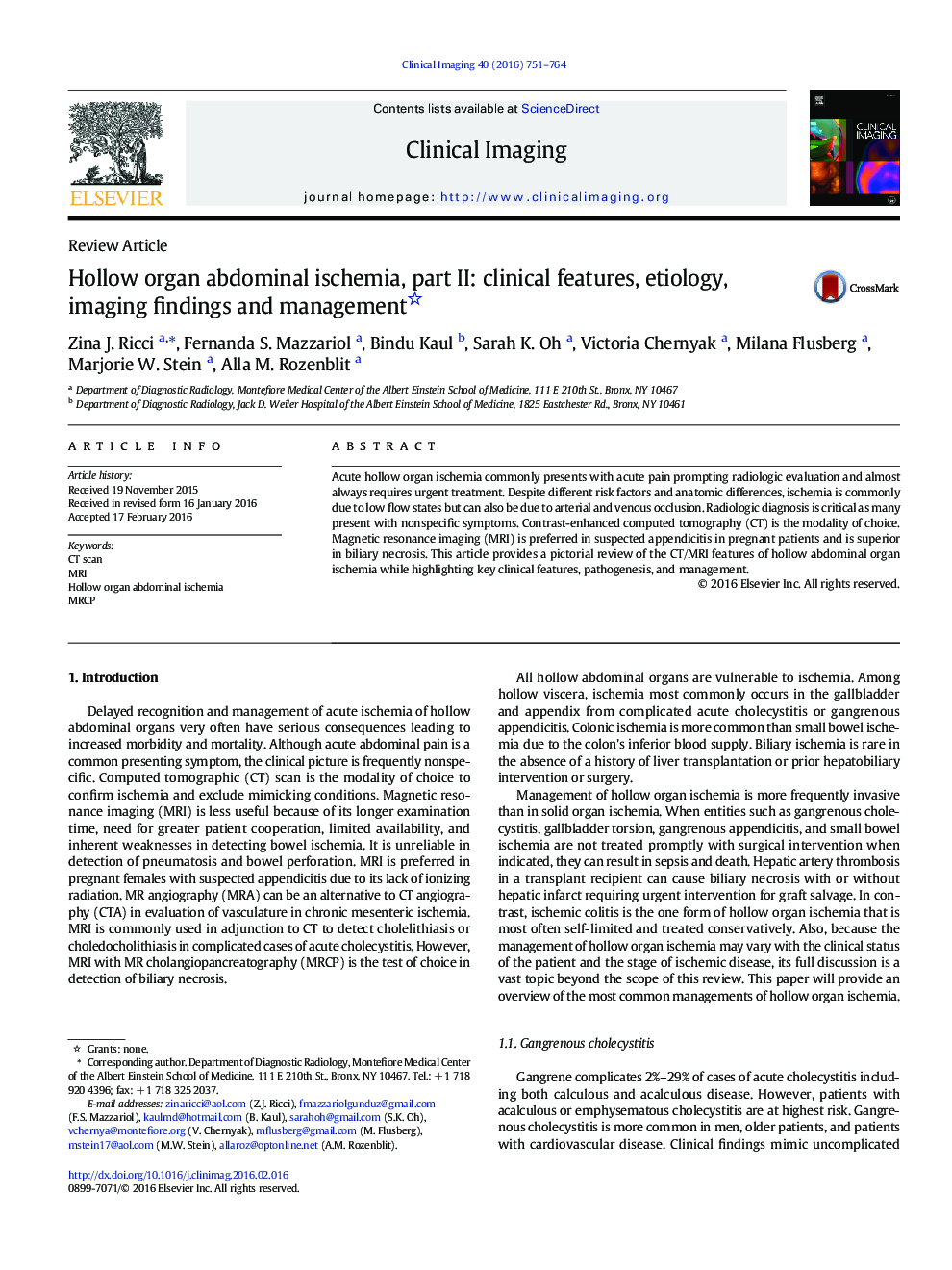| Article ID | Journal | Published Year | Pages | File Type |
|---|---|---|---|---|
| 4221113 | Clinical Imaging | 2016 | 14 Pages |
Abstract
Acute hollow organ ischemia commonly presents with acute pain prompting radiologic evaluation and almost always requires urgent treatment. Despite different risk factors and anatomic differences, ischemia is commonly due to low flow states but can also be due to arterial and venous occlusion. Radiologic diagnosis is critical as many present with nonspecific symptoms. Contrast-enhanced computed tomography (CT) is the modality of choice. Magnetic resonance imaging (MRI) is preferred in suspected appendicitis in pregnant patients and is superior in biliary necrosis. This article provides a pictorial review of the CT/MRI features of hollow abdominal organ ischemia while highlighting key clinical features, pathogenesis, and management.
Related Topics
Health Sciences
Medicine and Dentistry
Radiology and Imaging
Authors
Zina J. Ricci, Fernanda S. Mazzariol, Bindu Kaul, Sarah K. Oh, Victoria Chernyak, Milana Flusberg, Marjorie W. Stein, Alla M. Rozenblit,
